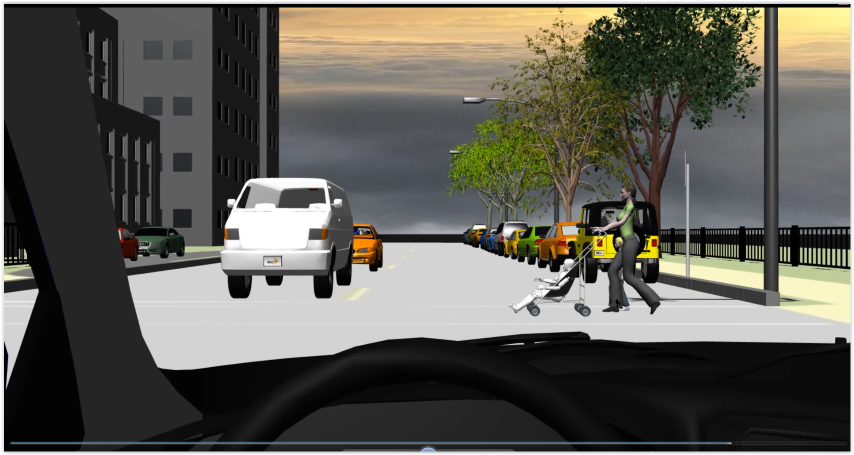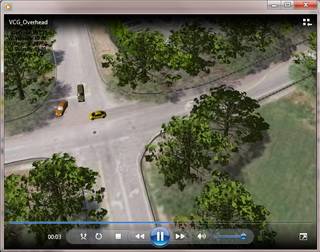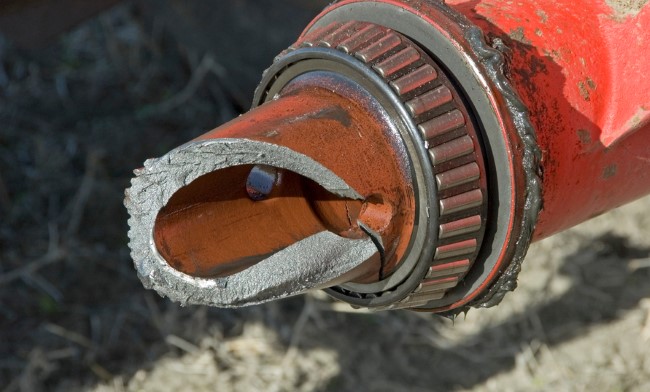We’ve all heard the expression “a picture is worth a thousand words”. How many words then is an animation worth? Let’s do the math. The typical animation has 15 to 20 frames a second. The average accident scene can be shown in about 6 to 8 seconds. If you multiply 6 by 15 by a thousand, you get a six second animation is equal to a 90,000 word report. At 500 words a page, that’s the equivalent of a 180 page report. Now obviously, there’s nothing scientific about the 1000 words, it comes from an old saying. But, it may be hitting pretty close to the mark. Try and describe an accident. Can you do it without your hands? It is possible. But it certainly is a lot more difficult, takes much more time and probably isn’t nearly as effective. There’s an old joke that says the only way to get a fighter pilot to shut up is to break both his hands. They can’t describe a dogfight without the use of their hands.
The same challenges face professional accident reconstructionists. To accurately describe a motor vehicle accident in a written report can be more difficult, take more time (therefore more expensive to their client) and often times be less effective than if the accident reconstructionist had created a computer simulation.
An accident reconstructionist is usually engaged for two reasons: to determine what happened in a motor vehicle accident and then to describe his findings to his client and perhaps in the end to a jury at trial.
Just as it is easier to describe an accident using visual aids, it is that much easier to understand what occurred in an accident by viewing a simulation than by reading a written report. One can get a much clearer understanding of what transpired by viewing an animation that places the viewer at different vantage points (behind the wheel of any of the involved vehicles or a bird’s eye view) with just the click of a mouse, than by poring over a detailed 10 page engineer’s written report. How would it influence your case if you could see the accident unfold in real time from the perspectives of the involved drivers?
Computer animations are not new, they’ve been around for decades. Why then have they just now become viable alternatives? Two variables have recently changed to make animations an effective reporting tool. The first that has changed is cost. Animations historically were prohibitively expensive for all but the most high-dollar, high-profile claims and cases. This is no longer true. A detailed animation with multiple points of view can now be completed in 4-8 hours, the same amount of time needed to compile a written report. The second variable is who is constructing these animations. Traditionally animations were created by specialized firms using very specialized programs. Thus the high cost to produce these animations. Now, with today’s technology, the animations can be created at the desk of the accident reconstructionist by the accident reconstructionist themselves. This affects the cost of animations, but also the time of delivery and the flexibility of the product. No longer does the accident reconstructionist ship off the data to the animation company and wait for finished product. They are now constructing the animation themselves. As new facts are discovered, they can now, immediately be incorporated into the animation.
The animation is now a visual report constructed by an accident reconstructionist, to follow up an oral report and to bolster or in some cases supplant a written report. Of course, if one prefers, they always have the option to read (and pay for) a 180 page report. Please call 800.780.4221 today to discuss your case specifically.





